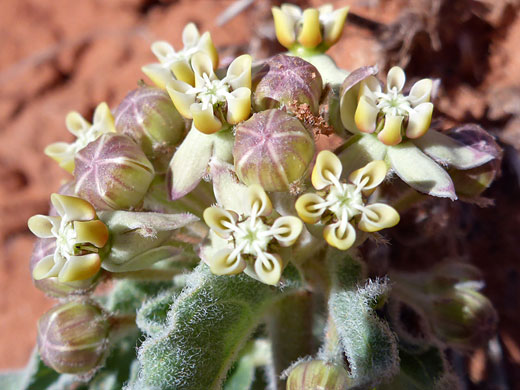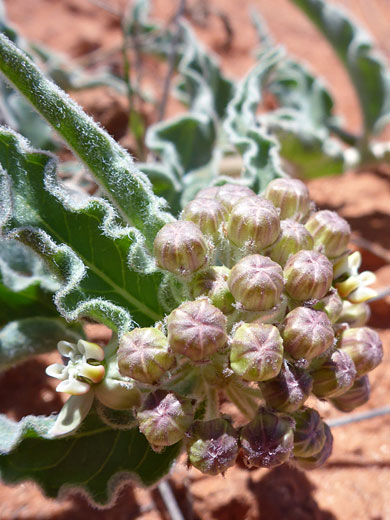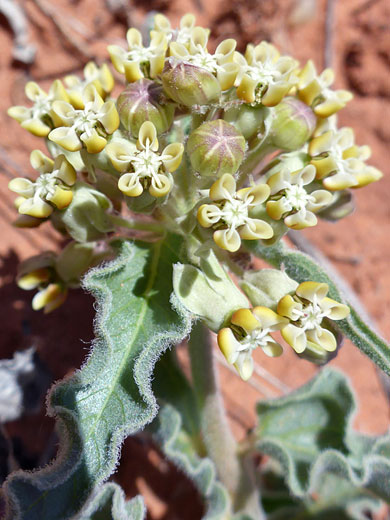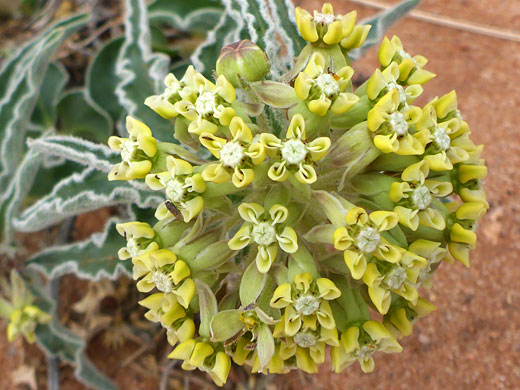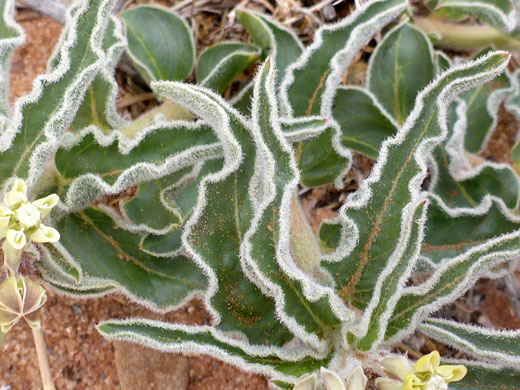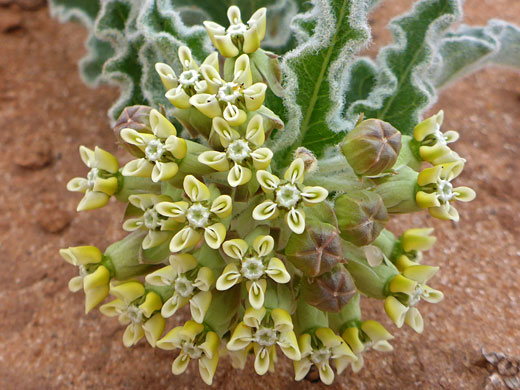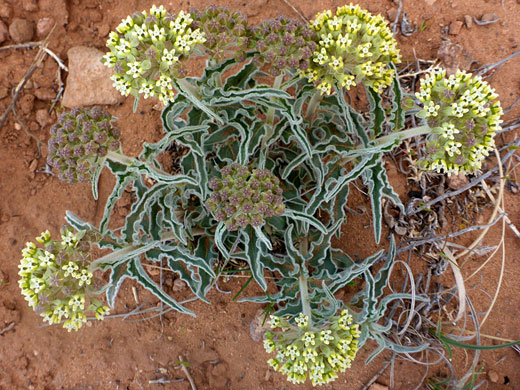Common names:
Dwarf milkweed, bigseed milkweed
Family:
Scientific name:
Asclepias involucrata
Synonym:
Asclepias macrosperma
Main flower color:
Range:
New Mexico, and parts of all adjacent states
Height:
Up to 7 inches
Habitat:
Woodland, desert scrubland, sandy or grassy areas, from 3,500 to 6,000 feet
Leaves:
Lanceolate, hairy, almost sessile, pften with wavy edges; up to 1 inch wide and 2.5 inches long
Season:
April to June
Asclepias involucrata is a low-growing species, inhabiting dry, often sandy places in semi-desert regions. Leaves are quite distinctive, being grey-green in color, wavy along the margins, and partly covered with soft, curly hairs, on the edges and undersides; the upper surfaces are essentially hairless. Plants produce several stems, generally growing at an angle or almost sideways; they may branch a few times, below the middle. The stems have a similar hair covering.
Each stem is topped by a spherical umbel of between 10 and 20 flowers, beneath which are a few leafy bracts. Flowers are formed of a greenish-yellow calyx, its five broad lobes reflexed back against the pedicel, and five yellow or white hoods, each containing a bent horn that angles inwards, to the middle of the terminal disc formed by the fused pistil and anthers.
Asclepias macrosperma is a synonym, though sometimes considered a separate species; asclepias involucrata is distinguished by having paler flowers, greenish-white rather than yellow, and leaves with less wavy margins.
Each stem is topped by a spherical umbel of between 10 and 20 flowers, beneath which are a few leafy bracts. Flowers are formed of a greenish-yellow calyx, its five broad lobes reflexed back against the pedicel, and five yellow or white hoods, each containing a bent horn that angles inwards, to the middle of the terminal disc formed by the fused pistil and anthers.
Asclepias macrosperma is a synonym, though sometimes considered a separate species; asclepias involucrata is distinguished by having paler flowers, greenish-white rather than yellow, and leaves with less wavy margins.
All Contents © Copyright The American Southwest | Comments and Questions | Contribute | Site Map



